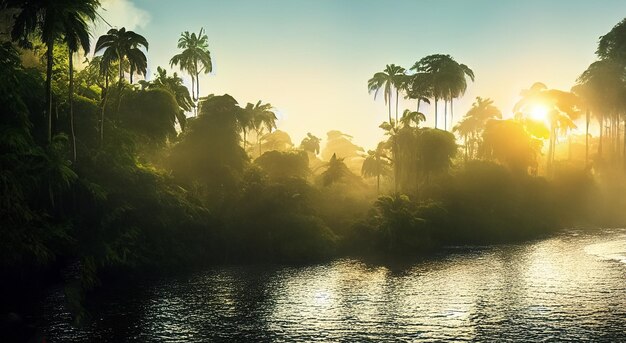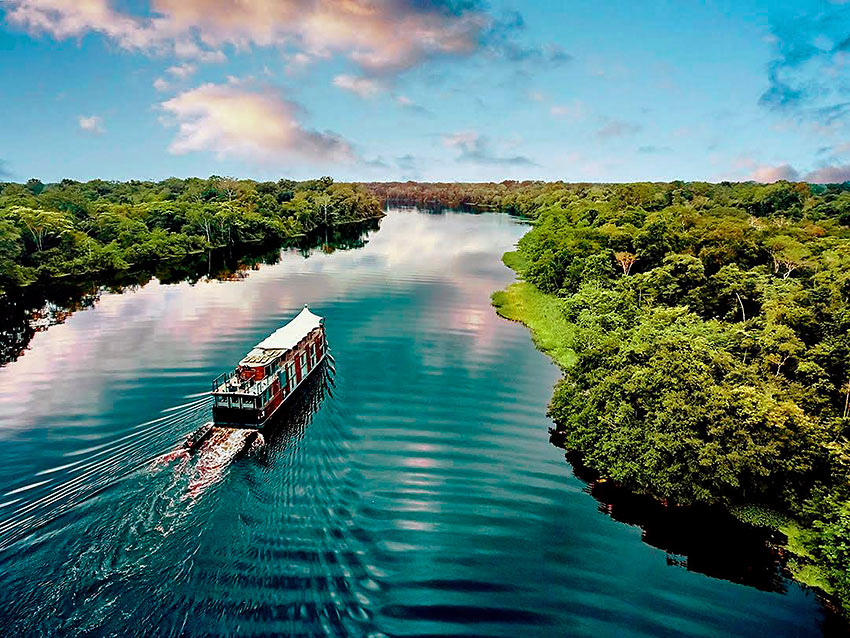
AMAZONAS ADVENTURE
This is a trip that I was asked by y friend to plan out about two years ago. This friend of mine, Peter Toth, who earned is middle name “Wolf” from the Cherokee people a famous American-Hnngarian sculptor, and his entire life is about honoring the natives in America.
The Amazon River aka Rio Amazonas is the continent largest river in South America, and the largest in the world by volume and the second longest river-system in the world. The river has an average discharge of about 215,000–230,000 m3/s and approximately 6,591–7,570 km3 (1,581–1,816 cu mi) into the Atlantic Ocean. It has a recognized length of 6,400 km (4,000 miles).
The PLAN
On September 1st of 2025 My friend Peter “wolf” Toth and I will leave US for the mighty jungle. As we planned, we will fly to Brazilian city, Belem. From here we will continue our trip into the Amazonas by a local riverboat.
We planning to travel about a 1000 miles on the Amazon river all the way to Manaus, the jungle largest city where we try to contact with the local native tribes.
Why? My friend Peter, who is a sculptor, planning to create his 75th whispering giant in the Amazonas to honor the local Indian tribes.
PETER "wolf'' toth
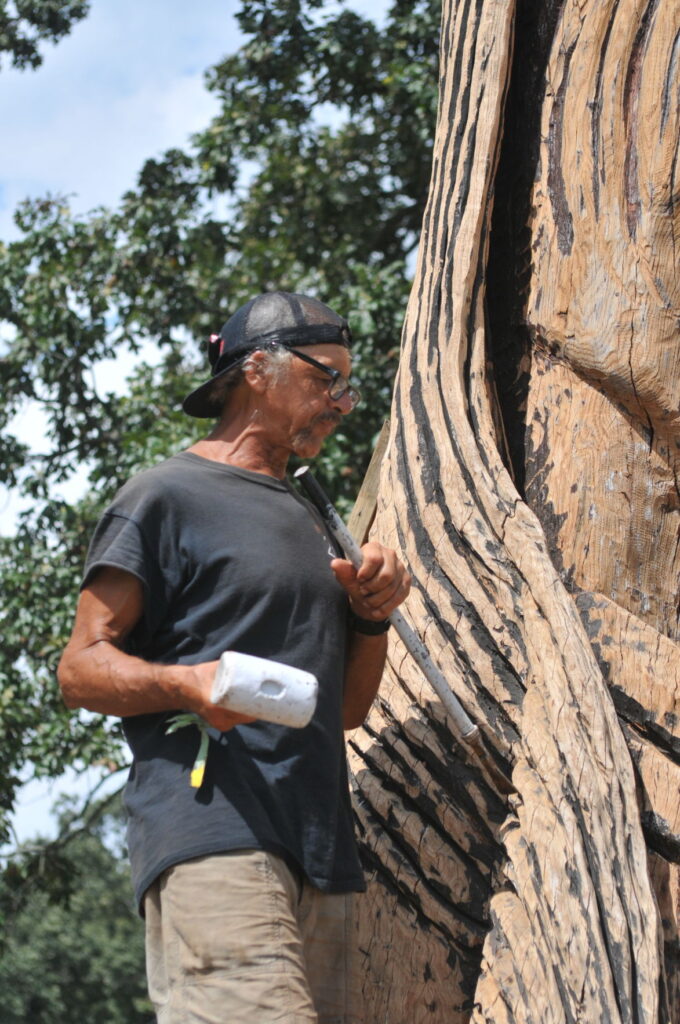
Peter Wolf Toth (born December 1947) is an American sculptor. Born in Hungary, Toth immigrated to the United States and settled in Akron, Ohio. He created a series of sculptures called Trail of the Whispering Giants to honor Native Americans. He has created more than 74 sculptures, including at least one in each state of the United States, and in several provinces and territories of Canada.
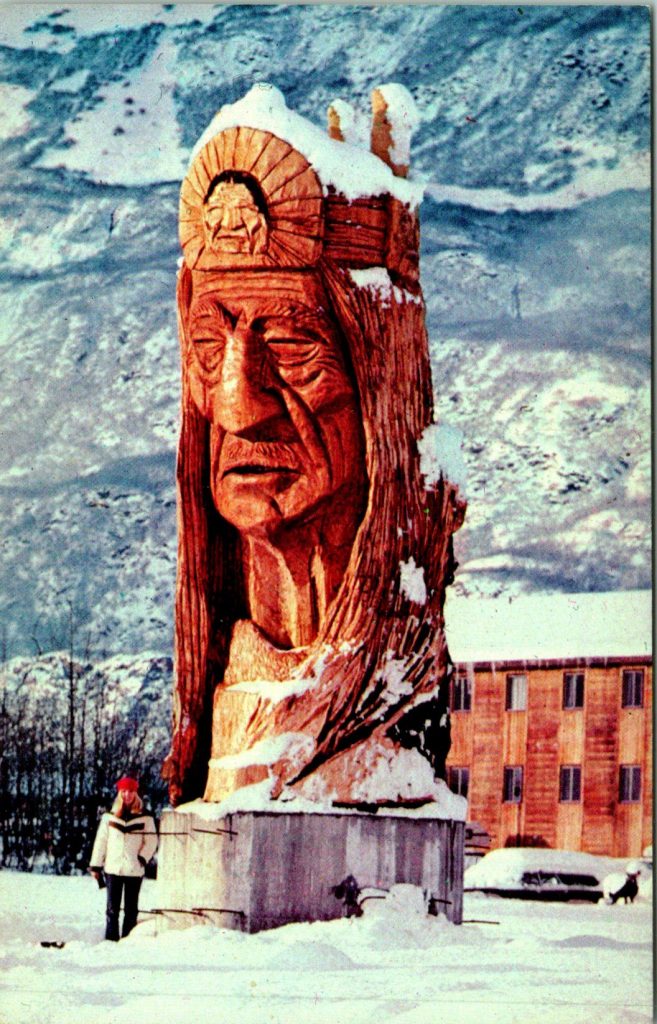
The Trail of the Whispering Giants is a collection of sculptures by American artist Peter Wolf Toth. The sculptures range in height from 20 to 40 feet (6.1 to 12.2 m), and are between 8 and 10 feet (2.4 and 3.0 m) in diameter. In 2009, there were 74 Whispering Giants, with at least one in each of the 50 U.S. states, as well as in Ontario and Manitoba, Canada,[3] and one in Hungary. One in Oregon was removed in 2017 after irreparable windstorm damage,[5] reducing the total to 73. In 1988, Toth completed his goal of placing at least one statue in each of the 50 states, by carving one in Hawaii, and in 2008, he created his first Whispering Giant in Europe, Stephen I of Hungary in Délegyháza,[6] Hungary along the Danube River.[4]
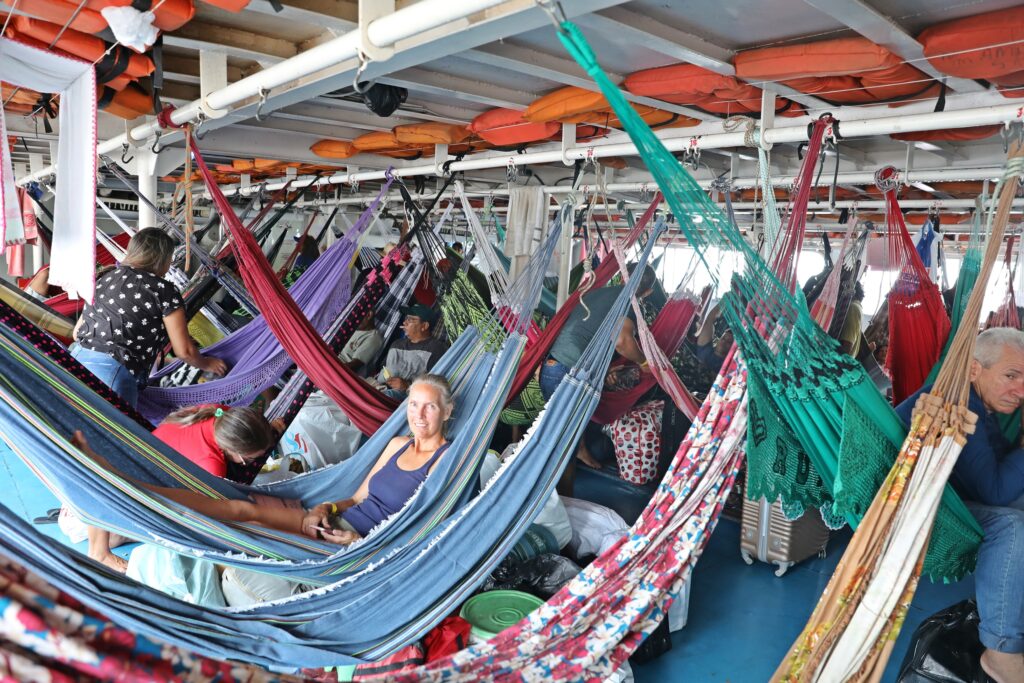
The Boat
The Amazonas is a dense jungle without roads. Only way to travel is by plane or boat. Since the plane ride is really expemsive, the locals takeing the boat rides, that takes several days between the cities. on these boat they taking thir goods, such as animals and groceries. most of the locals are sleeping in hammocks instead of rentung a cabin. In many cases the boast are filled with 7-800 hammocks.
Peter and I will travel the same way with the locals.
BELEM
Belém means in Portuguese for Bethlehem. initially called Nossa Senhora de Belém do Grão-Pará, in English Our Lady of Bethlehem of Great Pará. Founded in 1616 by the Kingdom of Portugal, Belém was the first European colony on the Amazon but did not become part of Brazil until 1775.
Belem is It is the second largest city in the North Region. The second only to Manaus, in the state of Amazonas, and basically it is the gate for the majastic river and junle: The Amazonas.
The city of mangos earned its name after Santa Maria de Belém in Lisbon, also better known by its shortened name, Belém.
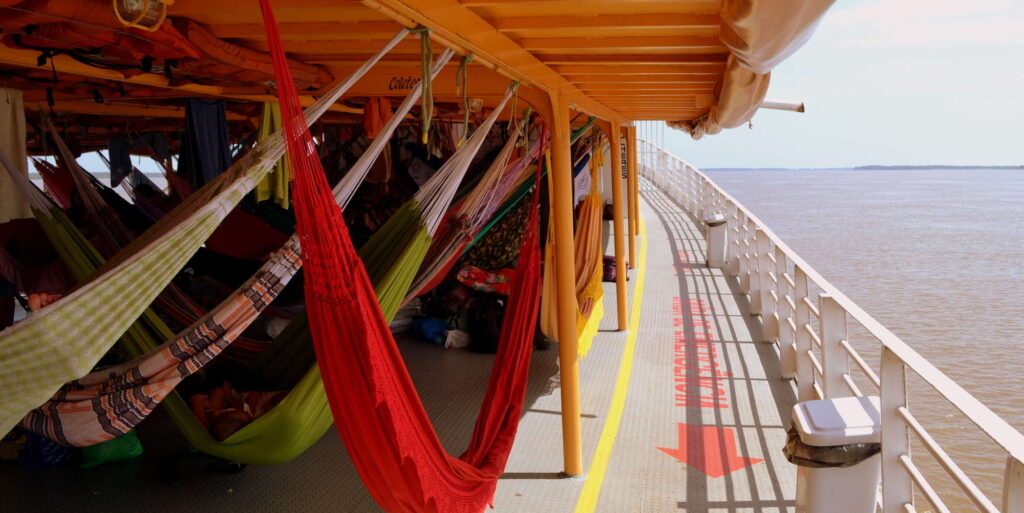
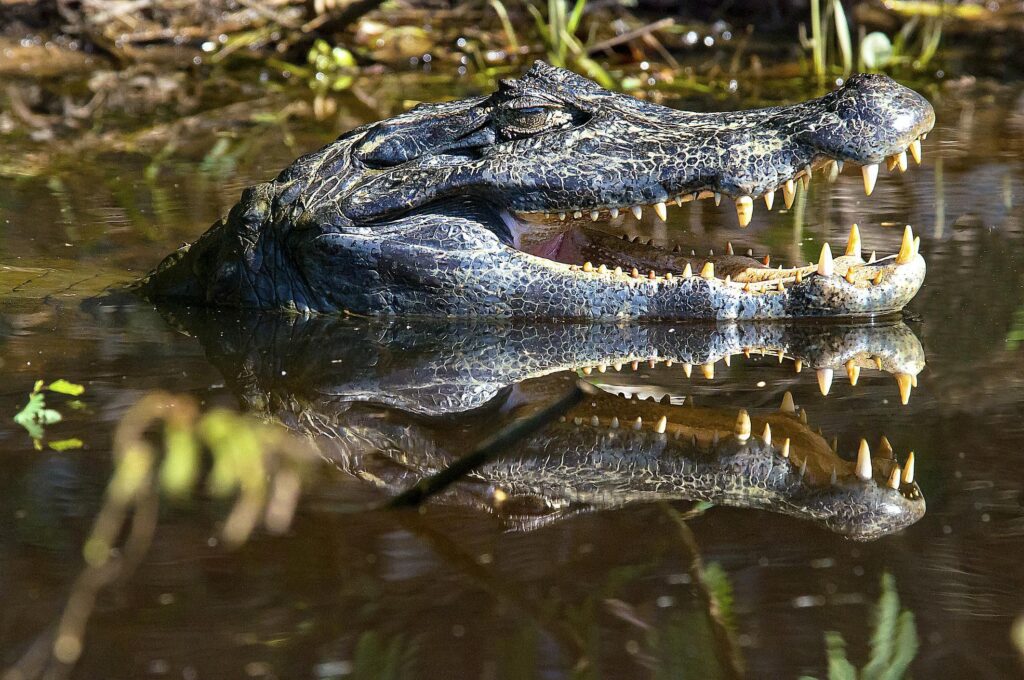
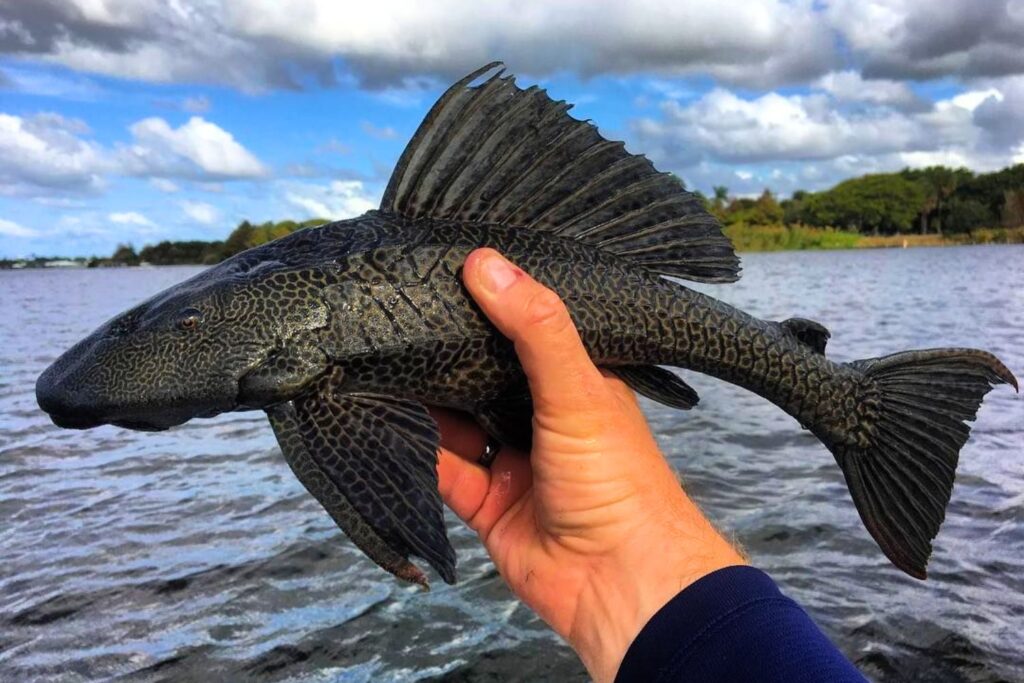
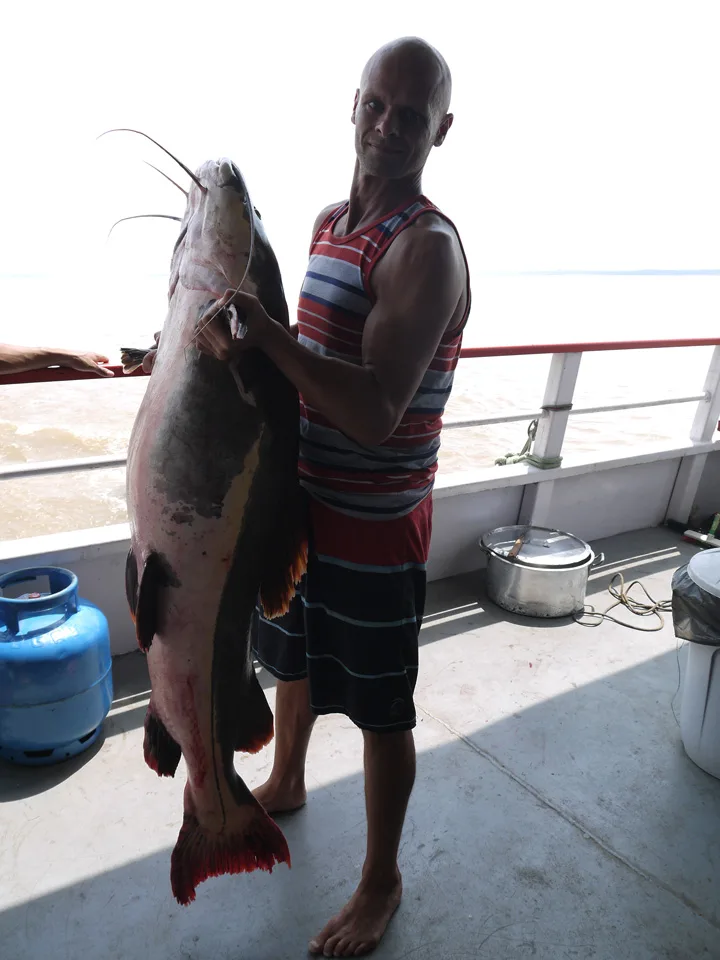
We try to eat local food which is the best way to get to know another culture.
THE MENU Amazon Rainforest Food: Traditional Dishes You Have To Eat
Tacacá: A traditional Amazonian soup …
… that warms the soul. Made primarily from tucupi, a yellow sauce extracted from the cassava plant, this dish is enriched with jambu, a herb that produces a unique tingling sensation in the mouth. Tacacá is typically served hot in a bowl and often garnished with dried shrimp, adding depth to its flavor.
This comforting soup is popular especially during the rainy season in Manaus
Pato No Tucupi: Duck in Ticupi Sauce
Pato No Tucupi is a classic dish that showcases the richness of Manaus cuisines. This delicious offering features duck cooked slowly in tucupi, the flavorful extract from cassava. The duck embraces the zesty notes of the tucupi, creating a delectable combination that is beloved in the region.Traditionally, this dish is served with rice and jambu, which adds an exciting herbal twist.
FOOD IN MANAUS
Açaí: The Amazonian Superfood
Manicoba: A Unique Spinach Dish
Manicoba is a traditional Amazonian dish that showcases the region’s unique flavors. This hearty meal is made from the leaves of the manioc plant, often referred to as cassava. The leaves are cooked for several hours, traditionally with meats, such as pork or beef, and served with rice.
One of the key aspects of manicoba is the meticulous preparation of its leaves. They must be cooked thoroughly to remove toxins, making it a safe and nutritious option. The finished dish has a rich and earthy flavor, often enjoyed with spicy sauces or side dishes.
6. Jaraqui Fish: A River Delight
Jaraqui fish is a beloved ingredient in Manaus cuisines, particularly known for its unique taste and firm texture. This fish, native to the Amazon River, is a versatile catch used in numerous local dishes. Many residents consider jaraqui a delicacy, often grilled, fried, or used in soups.
Pirao: The Comforting Amazonian Dish
Pirão is a beloved dish that showcases the heartwarming essence of Manaus cuisines. This traditional dish is often made from the leftover broth of fish or meat combined with farinha de mandioca (cassava flour). The result is a thick, creamy side that pairs beautifully with fish, meats, or even beans. Its texture is reminiscent of polenta, and it is often served as a comforting staple during family gatherings.
Additionally, pirão is known for its versatility; locals often customize it with their favorite spices or herbs. This dish not only fills the stomach but also warms the soul, making it a must-try for anyone visiting the Amazon region
THE DRINKS OF THE AMAZON
Non-Alcoholic Beverages
Natural fruit juices:
Like the following: cashú or cashew, camu camu, cocona, soursop, guava, lemon, lucuma, melon, watermelon, pineapple, papaya, taperibá, etc.
Masatos (not fermented)
Drinks prepared with palm tree drupes and those made with cassava , such as: cassava, banana, sweet potato or pandisho masato.
banana-based drinks
Like the chapo, the upe, the shibé, the pururuca or the plataniza;
palm tree drupes
Drinks are also made with cooked palm drupes, such as aguajina, ungurahuina, pijuayina, huasaí or coconut water.
Guarapos
Like the huarapo or guarapo made from sugar cane.
These are refreshing drinks, taken fresh, without letting them ferment.
Alcoholic or fermented beverages from the Amazon
Among the members of the native Amazonian indigenous communities, the most popular drink, in all the countries of the basin , is masato or chicha, generally made from sweet yucca. They call it the beer of the Amazon.
Alcoholic beverages are many and popular, and are consumed by both the inhabitants of the native indigenous communities and the Amazonian population centers, although the reasons and the drinks consumed are different.
Masato : beer from the Amazon
Among the fermented ones we find the masato or chicha , which is made with yucca, or banana, or palm drupes, which are the preferred drinks by the Amazonian indigenous people.
Among the members of the native Amazonian indigenous communities, the most popular drink, in all the countries of the basin, is masato or chicha, generally made from sweet cassava, although they also make it from other raw materials.
They call masato the beer of the Amazon.
distilled beverages
Distilled beverages include cane brandy, cachaça, the popular Brazilian brandy distilled from sugar cane juice.
The most popular drinks among mestizos and settlers are beer, aguardiente or cachaça, and alcoholic beverages derived from the maceration of certain barks or roots in cane liquor.
“Aphrodisiac” drinks
Many of them have colorful names, such as beehive, chuchuhuasi, canelazo, huitochado, orange or viborachado, or names with double meanings, such as romper calzón, achuni ullo, get up Lázaro, seven times without taking out, in clear allusion to their alleged aphrodisiac powers.
In the populated centers of the basin, the most popular alcoholic beverage, in this case distilled, is cane liquor or cachaça.
Psycho-active drinks
Among the psychoactive drinks, which contain alkaloids, such as caffeine and other alkaloids, which cause certain effects on the normal functioning of the central nervous system, we find the infusion of guayusa , and the drink of ayahuasca , stronger than the first, and that is ingested in magical-religious contexts, ritual ceremonies or physical or spiritual healing.
The infusion of guayusa, or simply guayusa, is the daily and ritual drink of some native communities of the Ecuadorian Amazon , such as the Achuar or Jíbaro.
THE SUNSET AND SUNRISE
Beside I’m really excited to see the Mazon river and the Jungle, I’m very curious about the sunsets and sunrises. I’m sure the best photo OP on the entire trip will be at Dawn and Dusk.
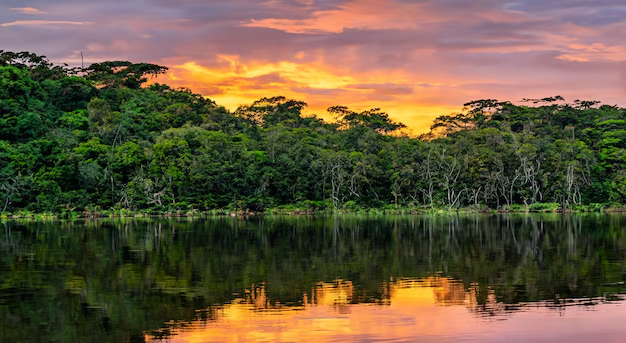
THE SUNSET
As I was reading about the sunset in the amazon is sounds magical. As the sun goes down, all suddenly the animals start to cream, the colors start to set above the river and I can’t wait for that feeling that will set in my soul.
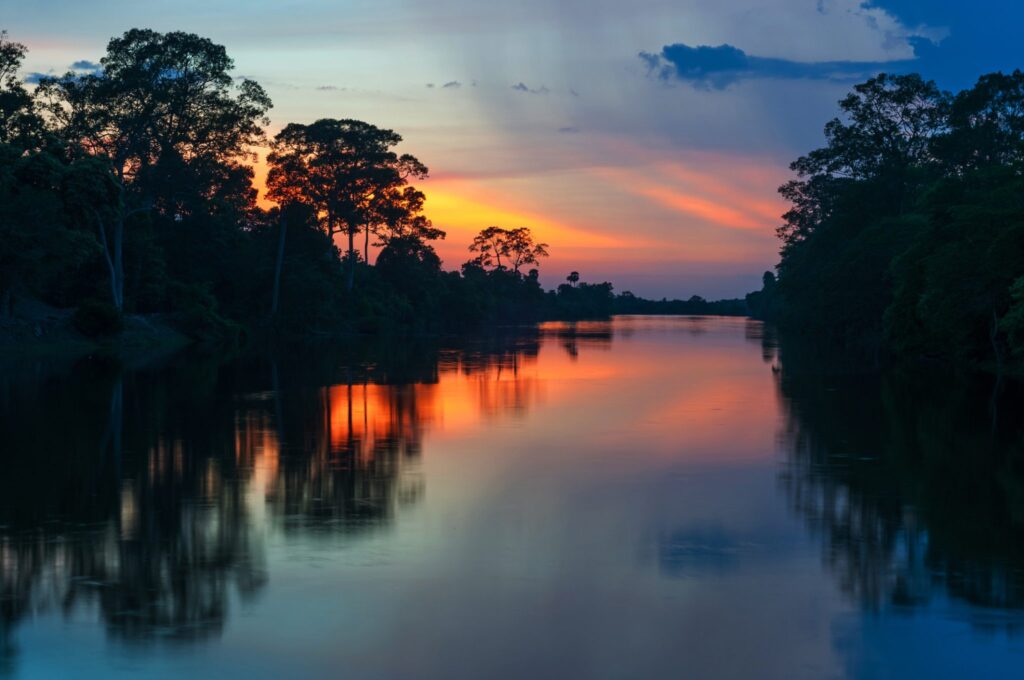
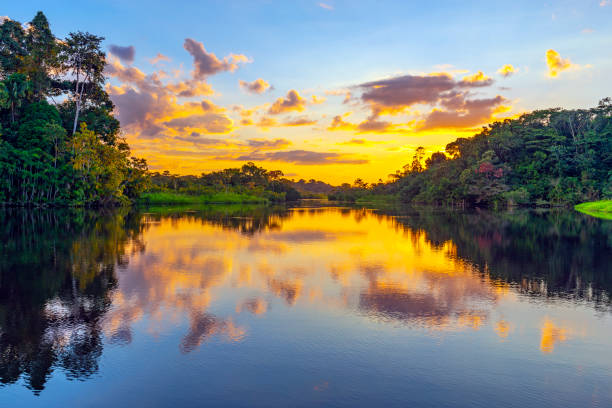
THE SUNRISE
One of the most beautiful moments will be the sunset on this trip, when after the hot night a cool breezy and foggy morning follows and I will see it quietly on the river from hammock. I will have a several mornings like this and I have to tell you…. it will be life changer moments
